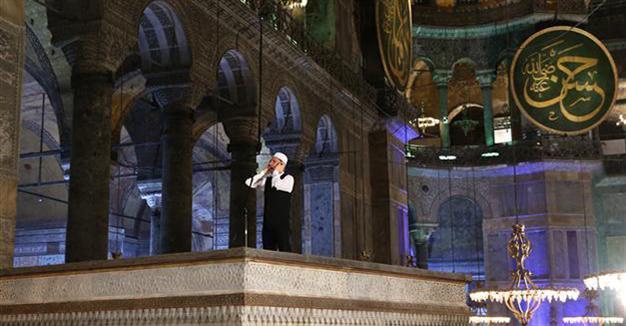First call to prayer inside Istanbul’s Hagia Sophia in 85 years
ISTANBUL - Anadolu Agency

AA photo
A muezzin’s call to prayer reverberated inside the sixth-century Istanbul landmark Hagia Sophia for the first time in 85 years on July 1.
The building in the city’s historic Sultanahmet district broadcast the azan from its minarets following July 1’s Laylat al-Qadr, or night of power, marking the first revelation of the Quran to the Prophet Muhammad.
The broadcast of the morning call to prayer from within Hagia Sophia is likely to reignite controversy over the use of the building, which was designated a museum in 1935 under Mustafa Kemal Atatürk, the founder of the modern Turkish Republic. Although the call to prayer has been played from Hagia Sophia’s minarets for the last four years, the muezzin has always chanted from a prayer room in the museum grounds rather than from inside the former mosque and cathedral.
Built as an Orthodox Christian basilica during the reign of Byzantine Emperor Justinian I in 537, the famous domed structure, known as Ayasofya in Turkish, was converted into a mosque following Sultan Mehmet II’s conquest of the city in 1453.
In recent years there have been calls to return the building to Muslim worship. Last month, the Greek government complained about the reciting of the Quran in Hagia Sophia during Ramadan – criticism the Turkish Foreign Ministry described as “unacceptable.” For the azan call that was televised in a July 2 program featuring Mehmet Görmez, the head of the Religious Affairs Directorate (Diyanet), Greek Foreign Affairs Ministry Spokesperson Efstratios Eftimiu said: “We express our intense concern and discomfort at yet another step that undermines the nature of Hagia Sophia as a monument of global cultural heritage and that obviously is not compatible with the principles that should govern a modern, secular state.”
